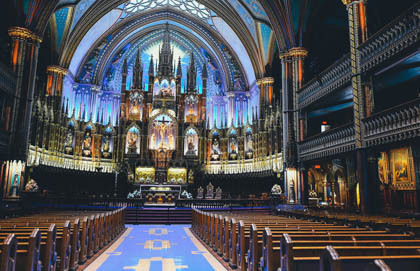My son and I recently spent a Saturday afternoon together in Ottawa taking in the Van Gogh exhibit at the National Gallery of Canada.
Completely uncharacteristically (okay, maybe not completely uncharacteristic), we emerged from the gallery locked in a vigorous debate. It was touched off when I said how much I dislike plaques, signage, headphone audio commentary or similar distractions at an exhibit such as the Van Gogh.
The name of the piece, if it has one, and possibly the completion date are the maximum data necessary when standing before a painting or any work of art. Other information should be acquired before or, preferably, after the encounter, I argued.
My son, a doctoral student in history who was visiting Ottawa to do research at the National Archives, was appalled.
"You are so wrong," he told me for what I am sure was the first time in his life. "The exhibit has to be curated otherwise most people would have no idea what they are looking at."
There should, he insisted, be abundant detail on matters such as the artist's socioeconomic status, the identities of friends, influences, customers, and patrons; the political, religious, and social conditions when the work was created; and, if I recall correctly, at least something about the major trading relationships of the country of origin to aid critical understanding of contemporary intellectual influences.
"But that imposes a narrative on the work—the narrative of whoever picks and chooses those details," I countered. "I don't want someone else's story forming my response when I am looking at a painting."
"You," he said for what I am sure was only the second time in his life, "are so wrong."
Entirely coincidently, I spent the next afternoon with my daughter, an artist and musician, visiting the Montreal Museum of Fine Arts. About half way through the Sunday schlep around the exhibits, I noticed a completely uncharacteristic (okay, maybe not completely uncharacteristic) look of distaste on her face.
"I hate it when they put up these plaques and signs and things," she said. "I don't want the people who work at the museum imposing their stories on me. I'm here to look at art, not read about it."
The easy thing to do would be to reduce the dichotomy to yet another "there are two kinds of people in the world" formulation. Reflecting on it, though, I was struck by the debate's applicability to life far beyond the plastic arts, including to the life of faith.
The imperative that galleries feel to place art and text side by side no doubt starts as benevolent compensation for deficiency in art history. The deficiency itself arises from the universal misconception that art must be treated democratically to fulfill its supposed obligation to edify us individually and socially.
The unintended consequence of the benevolence and the compensation, however, is to further diminish the minimal amount that is left of our capacity to stare at the world and pay full attention to our experience of it.
We are a culture gone mad with infinite varieties of voyeurism. Never in history has so much been so publicly peeped at, perused, ogled, given the once over up and down. Yet for all the vastness of this visual smorgasbord, how profound is our loss of cultivation of the habit of looking at what is directly before us to see it fully as creation, not mere explanation, not more information?
Again, the easy thing to do would be to ascribe this strictly to the short attention span theatre that is the current stage of our Western way of life. We could just blame it on Googlization and skip nimbly on to the next issue.
But well before the advent of the world wide web, I began to sense something much more serious than agitated attention spans behind our growing incapacity to look and see in the absence of supportive (and reductive) words. The responsibility, I grow increasingly convinced, belongs to our ubiquitous lack of trust, gusting at times almost to paranoia, that is a direct outcome of widespread loss of religious faith.
Denying God, we insist the world cannot be trusted to stand still even for the length of time we are able to stand still to look at it. Be still and know that I am God thus becomes be quick and verbalize as information what once you would have encountered as experience.
Even those of us who remain people of faith have become habituated to turning that faith to text, liturgy, preaching, understanding the Word through words, that is, through theology. To be clear, I am not opposing words. I have made my living for years as a writer, and have pursued language as a life long passion. Nor am I proposing obscurantism.
Yet it seems to me that we look at a painting precisely because its essence is that it is not text. Just so, don't we pray because the essence of prayer is not language? Isn't prayer interior gazing at God?
I mean that as a genuine, not a rhetorical, question. Completely uncharacteristically (okay, maybe not completely uncharacteristic), I am up for debate.





